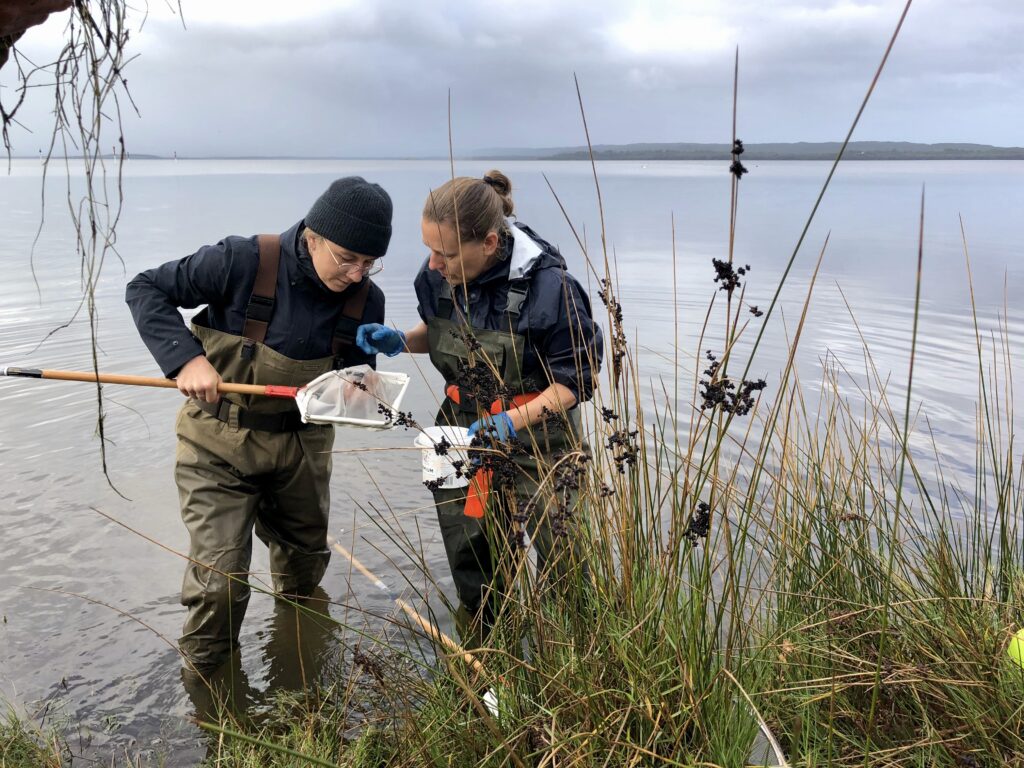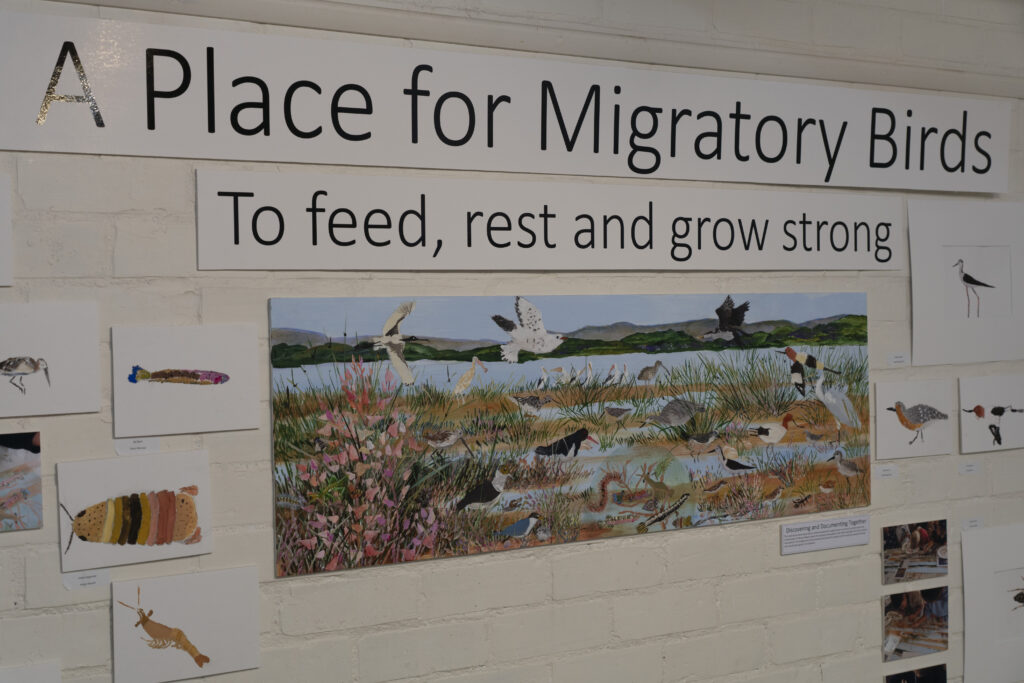Baby jellyfish, marine worms and glass shrimp were among the critters that delighted Denmark residents when Department of Water and Environmental Regulation (DWER) staff demonstrated seagrass and water quality monitoring techniques at a recent community event.
Nullaki is the Noongar word for seagrass and for Denmark’s Wilson Inlet and the surrounding area. The important role seagrass plays in the estuarine ecosystem was a central theme of the Knowing Nullaki Festival held in Denmark throughout May and June 2022.
DWER’s aquatic science team supported flagship events – a Nullaki Biodiversity Survey Day event held on the foreshore of the inlet, a cultural field trip and First Nations panel discussion and an art exhibition opening.
Aquatic Science branch manager Malcolm Robb and environmental scientists Dr Elke Reichwaldt and Caitlyn O’Dea from DWER joined the Biodiversity Day event and showed participants how to identify local seagrass.
“The nullaki (seagrass) keeps the estuarine ecosystem healthy in many ways. It provides habitat and food for animals and generates oxygen. Seagrass also stores carbon, so healthy seagrass can help us fight climate change.
“Seagrass sheds its leaves just like land plants do and as it decomposes it can accumulate on the shore. Events like this help us educate the community about the importance of seagrass and that this decomposition process is not usually harmful, even if it can be a little smelly at times,” Malcolm said.
“Community members were interested to see the tools our scientists use to identify seagrass species and assess their health. This includes a specially-designed cone with a glass bottom that allows us to get a closer look on the estuary floor without disturbing the seagrass meadows.”
Environmental Officer Dr Elke Reichwaldt said community members at the festival were curious to learn more about the health of the inlet.
“Participants at the Biodiversity Day community survey event were curious about how the inlet is doing, why the sandbar hasn’t closed yet this year, and how we measure its water quality and ecosystem health,” Elke said.
“We collected water samples and showed some of the plant and animal life. A highlight was that we found baby jellyfish and participants used their phones as microscopes to have a closer look.”

The festival was delivered by GreenSkills Inc and other community organisations and culminated in an art exhibition launch with artist in residence Angela Rossen.
Angela worked with local schools and community groups to produce several murals celebrating the biodiversity of the inlet and surrounds.
“It was wonderful to see over 100 people from all walks of life at the exhibition opening, especially children who had contributed to the artworks. They were delighted to see their work in the murals, and it was clear they learned about the inlet’s ecosystem and biodiversity through the process of making the art,” Elke said.
Knowing Nullaki Festival was supported by DWER through Healthy Estuaries WA ─ a State Government program that aims to improve the health of our South West estuaries. The festival events provided community engagement opportunities that will contribute to the development of a long-term Water Quality Improvement Plan for the Wilson Inlet.

